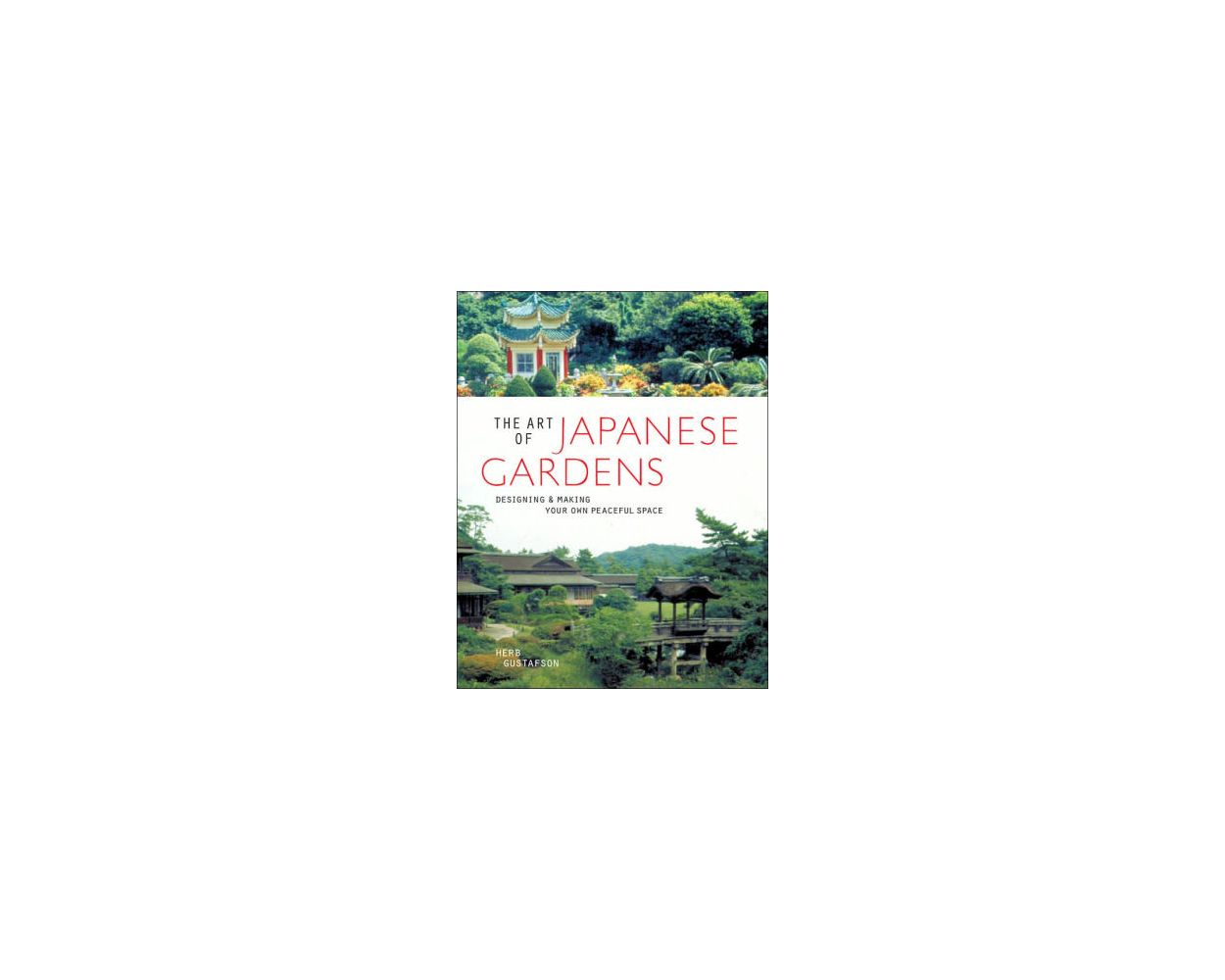The Art of Japanese Gardens: Designing & Making Your Own Peaceful Space (Paperback)
A Japanese garden is, indeed, a thing of beauty and tranquility. Gustafson gives a multitude of ideas and suggestions for creating such a garden, but a rather large lot would be needed--not to mention the expense. In a chapter on boundaries, the author discusses the function of cedar and bamboo fences, safety rails, retaining walls, gates, and tile roofs. In a chapter on rocks, boulders, and stones, he writes about their uses in bridges, walkways, and paths. Water is a large part of Japanese gardens, and Gustafson focuses on its use in ponds, waterfalls, and streams. He suggests having a pavilion or teahouse constructed and offers advice on the use of such garden ornaments as a water basin, rain-catching stones, bronze cranes and deer, stone lanterns, benches, and bridges. There's a chapter on garden design and a list of suitable plants, trees, hedges, vines, and ground covers for the garden. George Cohen --This text refers to an out of print or unavailable edition of this title.
| Price | $14.95 |
|---|---|
| Customer Service | Customer ServiceWe're Here To Help Call us anytime during our customer service hours... Monday through Friday - 8:30 am to 4:30 pm (Pacific) Order Questions: TOLL FREE, 800-273-7375 (Outside the U.S. call 818-887-7828). Our Address: 8001 Canoga Avenue Canoga Park, CA 91304 US Phone: 800-275-2665 E-mail: sales@buildersbook.com
|
| Description | Often gardeners become so enslaved to the work of maintenance and transformation that they neglect the meditative potential of their green space. Worrying over the details, the whole picture is sometimes lost. This is an attitude Herb Gustafson hopes to check in The Art of Japanese Gardens, a beautifully photographed book that creates in the reader a longing for total silence. Photographs of tranquil bridges, bright spidery Japanese maple leaves, and shimmering ponds are accompanied by unpretentious philosophical asides like "Our gardens can become a profound representation of the universe as a whole," and "We must pause to reflect on our journey thus far." Gustafson is not a stickler for historical detail: his notion of a "Japanese" garden is a hybrid of styles, some ancient, some modern. Chapters include "Boundaries," in which a variety of fences, walls, and gates are presented along with accessible descriptions of construction techniques. The third chapter explores that great dreamlike element of the traditional Japanese garden: the constant sound of running water, artificial streams where "we sit and are relaxed by the never-ending flow." To truly carry out many of Gustafson's projects, the reader needs to be extremely handy, or planning on hiring a professional. It's also an ideal coffee-table book for the urban apartment dweller who needs to be reminded of peaceful spaces every once in a while, even when the "journey thus far" seems like a series of missed connections and splitting headaches. --Emily White --This text refers to an out of print or unavailable edition of this title. A Japanese garden is, indeed, a thing of beauty and tranquility. Gustafson gives a multitude of ideas and suggestions for creating such a garden, but a rather large lot would be needed--not to mention the expense. In a chapter on boundaries, the author discusses the function of cedar and bamboo fences, safety rails, retaining walls, gates, and tile roofs. In a chapter on rocks, boulders, and stones, he writes about their uses in bridges, walkways, and paths. Water is a large part of Japanese gardens, and Gustafson focuses on its use in ponds, waterfalls, and streams. He suggests having a pavilion or teahouse constructed and offers advice on the use of such garden ornaments as a water basin, rain-catching stones, bronze cranes and deer, stone lanterns, benches, and bridges. There's a chapter on garden design and a list of suitable plants, trees, hedges, vines, and ground covers for the garden. George Cohen --This text refers to an out of print or unavailable edition of this title. |


